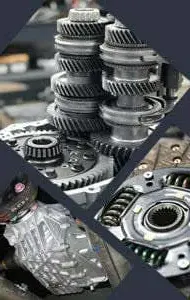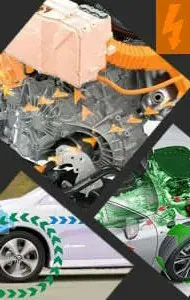Transmission Systems

Course Overview
The determining factor for the creation of the car was, oddly enough, the creation of the transmission system. The union of stationary internal combustion engines with the structures of existing horse carriages only required the invention of a system capable of transmitting force and movement from its origin, the engine, to the wheels. However, the task was not easy, giving rise to the development of an entire mechanical system that after years of study and evolution is able to transmit, interrupt and transform the force to adapt it to the needs of the circulation of vehicles by the variable land surface.
Nowadays, the design of the transmission system is a key factor in the performance, consumption and dynamic quality of automobiles, being its study and development as necessary as the engine itself. Of little use an exceptional engine if its potential does not manage to transmit properly to the wheels and become displacement.
The intention of the present course is to present the constructive and operational characteristics of the current mechanical transmission systems, as well as the related diagnostic and repair methods to solve their incidents or breakdowns. For this, the need and function of the different elements that make it up at the individual level and the development of the work of the whole will be studied.
The objectives of the course are:
- Recognise the dynamic needs of automobiles related to the transmission system.
- Assimilate the concepts of torque and power of work.
- Understand the transformation of linear and turning forces.
- Distinguish transmission systems according to their operating principle.
- Know the different components that are part of the kinematic chain, its functions, constructive characteristics and operating principle.
- Acquire the knowledge of diagnosis, verification, repair and maintenance necessary in relation to the transmission system and the source of its faults.
Course Topics
1.- Introduction
1.1.- History of transmission systems
2.- Kinematic chain
2.1.- Introduction
2.2.- Conditions
2.3.- Knowledge test
3.- Torque transformation
3.1.- Introduction
3.2.- Force, work and power
3.3.- Torque, speed and power
3.4.- Knowledge test
4.- Vehicle dynamic
4.1.- Speed and acceleration
4.2.- Kinetic energy
4.3.- Loss of traction
4.4.- Knowledge test
5.- Transmission system structure
5.1.- Introduction
5.2.- Traction types
5.3.- Knowledge test
6.- Flywheel
6.1.- Introduction
6.2.- Flywheels
6.3.- Twin-mass flywheel
6.4.- Checking and replacement
6.5.- Knowledge test
7.- Clutch
7.1.- Introduction
7.2.- Diaphragm clutch
7.2.1.- Flywheel
7.2.2.- Clutch disc
7.2.3.- Torsion shock absorber
7.2.4.- Clutch press
7.2.5.- Thrust bearing and clutch fork
7.2.6.- Clutch control
7.3.- Clutch diagnosis
7.4.- Repair and replacement
7.5.- Knowledge test
8.- Manual gearbox
8.1.- Introduction
8.2.- Gearbox
8.3.- Structure and components
8.3.1.- The shafts
8.3.2.- The pinions
8.3.3.- Synchronizers
8.3.4.- Selection forks
8.3.5.- The cases
8.3.6.- The selector mechanism
8.3.7.- The lubricant
8.4.- Diagnosis and repair
8.5.- Secuential gearboxes
8.6.- Knowledge test
9.- Differential
9.1.- Description and function
9.2.- Structure and components
9.3.- Diagnosis and repair
9.4.- Knowledge test
10.- Transmission shafts
10.1.- Introduction
10.2.- Longitudinal transmission shaft
10.3.- Cross transmission shafts
10.4.- Variable joints and homokinetics
10.5.- Diagnosis and repair
10.6.- Knowledge test
11.- Transmission ratio
11.1.- Description and calculation
11.2- Overdrive system
12.- Self-assessment
12.1.- Self-assessment
Average Duration
8h 23m
Access This Course
Get access to this course and 30+ more topics by subscribing.
Subscribe to Access All Online Courses
We provide access to all of our online courses for 12 months with a one-time purchase.
£199 ex.VAT per year


